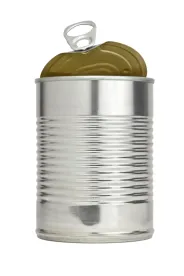The Cooperation Council for the Arab States of the Gulf, also known as the Gulf Cooperation Council (GCC), is a political and economic cooperative union of the Kingdom of Bahrain, the State of Kuwait, the Sultanate of Oman, the State of Qatar, the Kingdom of Saudi Arabia, and the United Arab Emirates (UAE). With the purpose of furthering trade between GCC Member States and with other trading partners, the GCC Standardization Organization (GSO) develops standards and technical regulations for the GCC Member States and Yemen, which cover, among other things, food-contact materials.
While the GSO has developed thousands of standards, the implementation of these standards is voluntary in the GCC Member States. The standards must be adopted into national law to have legal effect in the Member States and Yemen. Key GSO standards for food-contact materials include the following, which are discussed in turn below:
- GSO 2231/2012 (General requirements for materials intended to come into contact with food)
- GSO 839/1997 (Food packages – Part 1: General requirements)
- GSO 1863/2013 (Food Packages – Part 2: Plastic Packages – General Requirements)
GSO 2231/2012 (General requirements for materials intended to come into contact with food) covers those materials and articles that, in their finished state, are intended or reasonably expected to contact food, or to transfer their constituents to food under normal or foreseeable conditions of use. The standard expressly excludes, however, antiques that may contact food, and materials that form part of the food and may be consumed with it, such as meat casings and cheese rinds. It also excludes public and private water supply equipment.
The GSO 2231/2012 standard includes general requirements for food-contact materials and articles, such as the requirement for materials and articles to be manufactured using good manufacturing practice to avoid transferring their constituents to food in quantities that could endanger human health, unacceptably change the composition of food, or adversely impact the organoleptic characteristics of food. (GSO 2231/2012, item 3.1, 3.1.1, 3.1.2, and 3.1.3.) GSO 2231/2012 also specifies that active and intelligent packaging materials should not mask the spoilage of food, or otherwise mislead consumers about the packaged food. (GSO 2231/2012, items 3.2 and 3.3.) The standard authorizes the development of specific measures regarding those substances that may be used in the manufacture of food-contact materials, as well as purity standards and migration limits for these products. (GSO 2231/2012, items 3.6.1.) Other labeling and traceability requirements are included in the standard, such as the requirement to include the words “for food contact” and the glass and fork symbol  (as required in the EU) on finished materials and articles that are placed on the market without food. (GSO 2231/2012, items 4.1 and 4.8.)
(as required in the EU) on finished materials and articles that are placed on the market without food. (GSO 2231/2012, items 4.1 and 4.8.)
GSO 839/1997 (Food packages – Part 1: General requirements) describes the general requirements for “packages of food materials,” defined as “containers made from packaging materials suitable for foods and used for their containment, protection, and ease of use, such as metal cans, glass or plastic bottles, tins, paper, plastic and textile bags, wood and plastic boxes, paperboard containers, or any other types of containers including primary and secondary packages.” (GSO 839/1997, item 3.1.) Primary packages have interior surfaces that directly contact food, while secondary packages are external packaging for primary packaging materials with the purpose of transport, storage, distribution, and marketing. (GSO 839/1997, items 3.1 and 3.2.) The standard states that materials used in fabricating, forming, or treating packages for food must be “food grade” (i.e., it does not cause any hazards or health problems (GSO 839/1997, items 4.1 and 3.4)) and clean (i.e., it does not contaminate the packaged material).
GSO 839/1997 includes various technical performance requirements for food packaging, including design considerations, moisture, light, and oxygen permeability considerations, and engineering requirements. In addition, it states that packaging must not present any hazards to consumers when used. (GSO 839/1997, item 4.12.) The package must maintain the properties of the packaged food, and protect it from acquiring undesirable odors, flavors, and tastes. (GSO 839/1997, item 4.3.) The standard also internally references other GSO food-contact standards, such as those for fresh fruits and vegetable boxes.
GSO 1863/2013 (Food Packages – Part 2: Plastic Packages – General Requirements) defines “plastic package” as a package made of a plastic material (which itself is defined in the standard) to be used for “packaging a food material for purposes of attaining containment, protection and preservation.” The standard includes as examples of plastic packages “bottles, bags, plates, trays, cups, flexible or rigid tubes, jars, pouches, barrels, boxes, woven sacks, or any other geometrical shapes.” (See GSO 1863/2013, item 3.3.)
GSO 1863/2013 sets out various requirements for plastic packages. In addition to establishing certain technical performance requirements for plastic food packaging materials (e.g., packages shall not be affected by light when exposed to it for long periods (GSO 1863/2013, item 4.15), the standard states that such packages “shall not cause any hazards to consumer health.” (GSO 1863/2013, item 4.3.) Moreover, packages must not lead to the degradation of sensory properties of packaged food, or effect undesirable changes in the nature and quality of food. These requirements are akin to the safety and organoleptic requirements set out under the European Union’s Regulation (EC) 1935/2004 on materials and articles intended to come into contact with food (the EU Framework Regulation). As in the EU, this standard requires plastic packages that directly contact food to bear a glass and fork symbol (GSO 1863/2013, item 8.1.), and to meet an overall migration limit of less than 10 mg/dm2 or 60 mg/kg (GSO 1863/2013, item 4.21).
Following on the safety requirements noted above, GSO 1863/2013 requires pigments, coloring materials, and other components used in such products to be nonpoisonous and not have a tendency to migrate to food. The Standard also includes requirements on the concentration of monomers, such as vinyl chloride, styrene, and acrylonitrile, that may be present in plastic food packages. (GSO 1863/2012, items 4.17, 4.18 and 4.19.)
Importantly, GSO 1863/2013 establishes a list of authorized monomers, other starting substances, macromolecules obtained from microbial fermentation, additives, and polymer production aids (PPA) that may be used in the manufacture of plastic packages. These are described in terms of the chemical name and CAS Reg. No., a unique identifier (FCM substance no.), the EU packaging materials reference number, whether the substance may be used as an additive or PPA, and whether it may be used as a monomer or other starting substance, or a macromolecule obtained from microbial fermentation. The standard also specifies whether a fat consumption reduction factor applies to the migration results, whether the substance is subject to a specific migration limit (SML) or group SML (SML(T)), any other restrictions or specification that apply to its use, and any notes on verifying the compliance of the substance with the standard. Thus, GSO 1863/2013 closely tracks the organization of the EU Plastics Regulation, 10/2011, and includes a positive list of 885 FCM substance nos., which track the first 885 substances listed in the EU Plastics Regulation.
While there is no formal process for amending the GSO Standards, a request can be submitted to the GSO technical committee for review and consideration. Companies also must approach regulators in Member States of interest to secure corresponding national approvals.
Last year, the GSO notified the World Trade Organization (WTO) of its intent to adopt updated versions of the GSO 839/1997 and GSO 1863/2013 (i.e., GSO 839/2017, and GSO 1863/2017). Draft GSO 839/2017 now includes definitions of “active and intelligent packaging materials,” “oxygen propellant,” and “moisture absorbers,” reflecting innovation in packaging materials since the 1997 version of the standard was promulgated. The draft standard also references further GSO standards, including the standard for packages made of aluminum foil, and two-piece steel cans and the plastic packages standard. In addition, the draft standard now states that the ease of reusing or disposing of food packaging should be considered. (GSO 839/1997, item 4.19.) Changes also are contemplated under GSO 1863/2017; and however, the standard is intended to remain aligned with the EU Plastics Regulation.
As noted above, to be considered mandatory in the GCC Member States, the GSO standards must be adopted into the laws of individual countries. Below is a summary of the of food-contact standards that have been adopted in Bahrain, Kuwait, Oman, Qatar, Saudi Arabia, and the UAE.
Bahrain: GSO 2231/2012, 839/1997, and 1863/2013 are mandatory in Bahrain. The National Committee for Standards and Metrology at the Ministry of Industry, Commerce and Tourism is the national standards authority in Bahrain. In addition, Legislative Decree No. 3 of 1985 on the control of imported foodstuffs requires imported food to comply with commercial regulations and rules established in Bahrain.
Kuwait: GSO 1863/2013 is mandatory in Kuwait. The Kuwait Public Authority for Industry, Kuwait Municipality, the General Customs Authority, and the Environmental Protection Authority are relevant government agencies for the food packaging industry.
Oman: GSO 1863/2013 is mandatory in Oman. The Directorate General for Specifications and Measurements (DGSM) within the Ministry of Commerce and Industry is the national standards body in Oman.
Qatar: GSO 2231/2012, 839/1997, and 1863/2013 are mandatory in Qatar. The General Authority for Standardization and Metrology is the national standards body in Qatar. Currently, the food safety system in Qatar is managed by multiple agencies in different government ministries, including the Food Safety and Environmental Health within the Ministry of Public Health. However, efforts to establish a Food Safety Authority – which will be the sole regulator for managing food safety – are underway.
Saudi Arabia: GSO 2231/2012, 839/1997, and 1863/2013 are mandatory in Saudi Arabia. Saudi Arabia also maintains its own standard on packages made of aluminum foil (SASO 2173/2003). The Saudi Food and Drug Authority (SFDA) is responsible for establishing laws concerning food products and enforces, the standards and regulations established by Saudi Arabia and the GCC.
UAE: GSO 2231/2012, 839/1997, and 1863/2013 are mandatory in the UAE. The Emirates Authority for Standardization and Metrology (ESMA) is responsible for developing and adopting standards in the UAE. Materials must be manufactured in compliance with good manufacturing practice or other quality schemes adopted by ESMA.
While the lack of fully harmonized standards and requirements for food packaging material across the Middle East can create challenges for suppliers of food-contact materials, there are several GSO standards that have been widely adopted by the GCC Member States that establish comprehensive safety standards for food-contact materials and articles, including a positive list for plastic food-contact materials and articles.





 />i
/>i

